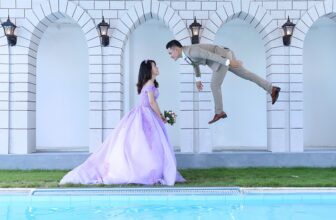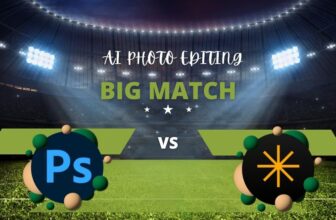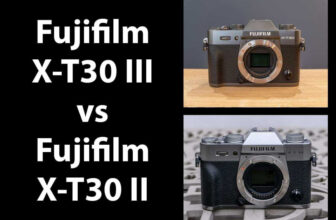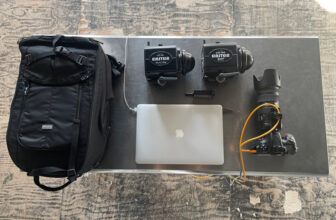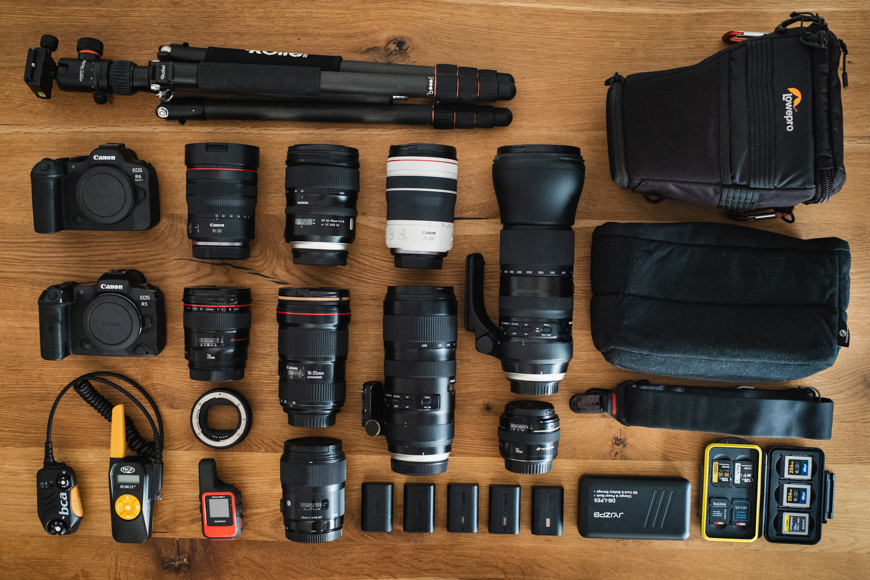
My name is Luca Jaenichen.
Based in Innsbruck, Austria, I explore the world’s wildest corners as an adventure and outdoor photographer.
Through my work, I hope to bring some of those faraway places closer to home for everyone and inspire people to get outside in a sustainable way.
Most of the time, I shoot landscape photography or document adventure and action sports, as well as expeditions. I love combining the human element with the grandeur of the outdoors and its vast backdrops.
Coming from a family with a history in print production and having grown up with historic personal photographs that tell stories of World War II and the post-war years, I’m a strong believer in documenting a scene with whatever camera you have on hand.
It’s not about the cost of the gear; it’s about the story. For every project, I strive to select the most suitable equipment to capture the moment without overly disrupting the subject. That’s why I usually run a minimal setup and decide in advance exactly what I need to bring.
That being said, here’s the equipment I use on a day-to-day basis:
Tools, not jewels.
I try to be gentle with my equipment whenever possible, but out in the field, I need my gear to work and withstand the rugged surroundings. Snow, water, cold, heat, rocks, there’s almost nothing that doesn’t happen on a shoot, so I love my equipment to be robust and withstand the elements.
Canon EOS R5 – This is my main workhorse. Although it’s well-used, it remains the jewel in my toolkit.
I’ve used this camera since its release, and its high resolution makes it perfect for landscapes and commercial work, especially when cropping flexibility or large-format printing is required.
Canon EOS R6 II – My backup camera and go-to low-light option when needed.
Its smaller file sizes make it ideal when I know I won’t need to crop in post or produce large prints. I really appreciate the flip-out screen and intuitive menu system.
Fujifilm X100VI – When I’m not carrying my main gear, this compact powerhouse is my go-to camera for documenting bikepacking, hiking, or skiing trips. The best camera is the one you have on you, and the Fuji fits in any backpack or bag, ready to go.
Canon RF 10-20mm f/4.0 – A fantastic rectilinear wide-angle lens, mainly used for landscapes and occasionally for action sports. A great addition to the 16–35mm I used for years.
Canon RF 24-70mm f/2.8 – The perfect in-between lens. I use it for scenes where flexibility is key, allowing quick focal length changes. If I had to take only one lens on a trip, it would likely be this one.
Canon RF 70-200mm f/4.0 – One of the most compact and lightweight telephoto lenses for full-frame cameras I’ve ever used. While I typically prefer wider apertures, the reduced size and weight of this lens make it incredibly practical.
Canon EF 16-35mm f/2.8 III – A reliable choice for landscape and adventure photography. Before switching to the RF system, this and the 70-200mm were my go-to combo.
Tamron SP 24-70mm f/2.8 Di VC USD G2 – A flexible lens for both commercial and adventure work. Solid performer in a range of situations.
Tamron SP 70-200mm f/2.8 Di VC USD G2 – Great for compressing mountain ranges or capturing athletes and distant objects. Covers a wide focal range with excellent quality.
Tamron SP 150-600mm f/5-6.3 Di VC USD G2 – Essential for surf or ski photography. I use this when I’m unable to get close to the subject or when the angle requires a distance. It’s heavy and large, so I carefully consider when to pack it.
Canon EF 24mm f/1.4 L II USM – Perfect for night photography and close-range documentary portraits. Similar to a 35mm look, but a bit wider.
Sigma Art 35mm f/1.4 DG HSM – My first-ever full-frame lens. It’s great in low light and offers a natural field of view. While its focal length once felt limiting, it helped spark creativity, especially for documentary and portrait work.
Canon EF 50mm f/1.4 – Admittedly, the lens I use the least. Still, it shines in low-light and portrait scenarios.
With bags and straps, it really depends on the job, location, and environment. I mostly use two systems for outdoor shoots, but adjust based on what’s needed.
Lowepro ProTactic TLZ 70 AW II – This setup is worn on my chest strap for quick access. It’s compact enough to allow for pole use but expandable to fit larger lenses, such as the 70-200mm f/2.8. I’ve modified it with carabiners to prevent it from swinging while skiing or moving fast.
Koolertron Camera Pouches – These are lightweight and flexible, perfect for storing lenses or my camera inside a duffel or backpack. They also fit Mavic drones, making them a versatile option.
F-stop ICU units – If I have enough space, I try to bring this setup in my backpack, so everything is a little bit more sorted.
F-stop Loka UL – When I need to carry more gear or don’t require a technical pack. The modular internal system is extremely practical, and there’s ample room for storing clothing or food.
Peak Design Slide Lite Strap – My long-time favorite. Quick to clip in and out, super convenient.
Peak Design Capture Clip – I used to rely on this more, but now I store my camera differently for most of my work.
Rollei Tripod C5i Carbon – Lightweight but stable, my go-to for photography in the field.
Regarding filters, I carry the K&F Magnetic ND Filter Set and the PolarPro QuartzLine CP Filter. For outdoor and action sports photography, I often add neutral density filters to protect my lens.
My gear list includes essential storage and power items to keep my equipment running smoothly. I rely on a waterproof SD/CF card case to protect my Angelbird CF Express 2 Type B cards, as well as Angelbird SD and MicroSD cards, for my drones and GoPros.
For backup and editing, I use SanDisk Extreme Pro SSDs, ensuring my data is safe and accessible. To keep my cameras powered up, I carry Canon LP-E6NH batteries and the Anker PowerCore+ 26800PD for charging on the go.
The Nitecore NB10000 is a super lightweight power bank, perfect for travel. At the same time, the JYJZPB DB-LPE6 serves as a combo power bank and charger for two camera batteries, making it an invaluable addition to my setup.
I work with a MacBook Pro 16” M1 that has 16GB of RAM, which provides me with the power I need for my tasks.
My primary editing tool is Adobe Lightroom Classic, as it efficiently handles my photo edits. Occasionally, I use Adobe Photoshop for retouching when I need to fine-tune an image. Additionally, I rely on Capture One for tethering during commercial shoots, ensuring a smooth workflow and immediate feedback on my shots.
When there’s no reception in the field or I need to stay in touch with moving athletes, I rely on the BCA BC Link 2.0 backcountry two-way radio and the Garmin InReach Mini 2 for emergency communication.
Other essentials are a Black Diamond Spot 400 Headlamp and a good cable pouch with adapters, cables, and spare SD cards.
Discussing gear is always enjoyable, but remember: the best camera is the one you have with you.
Today, all major brands offer great quality. Try different systems and choose the one that best fits your needs.
Let your gear be a tool, not a limitation for exploring the world around you.
Credit : Source Post



